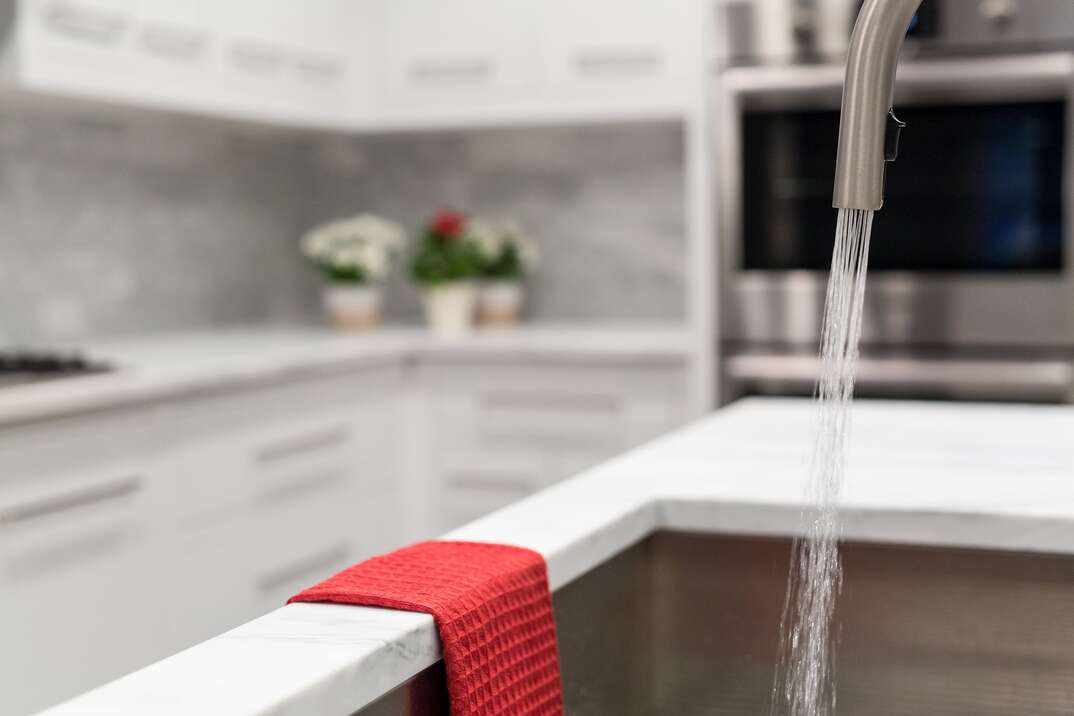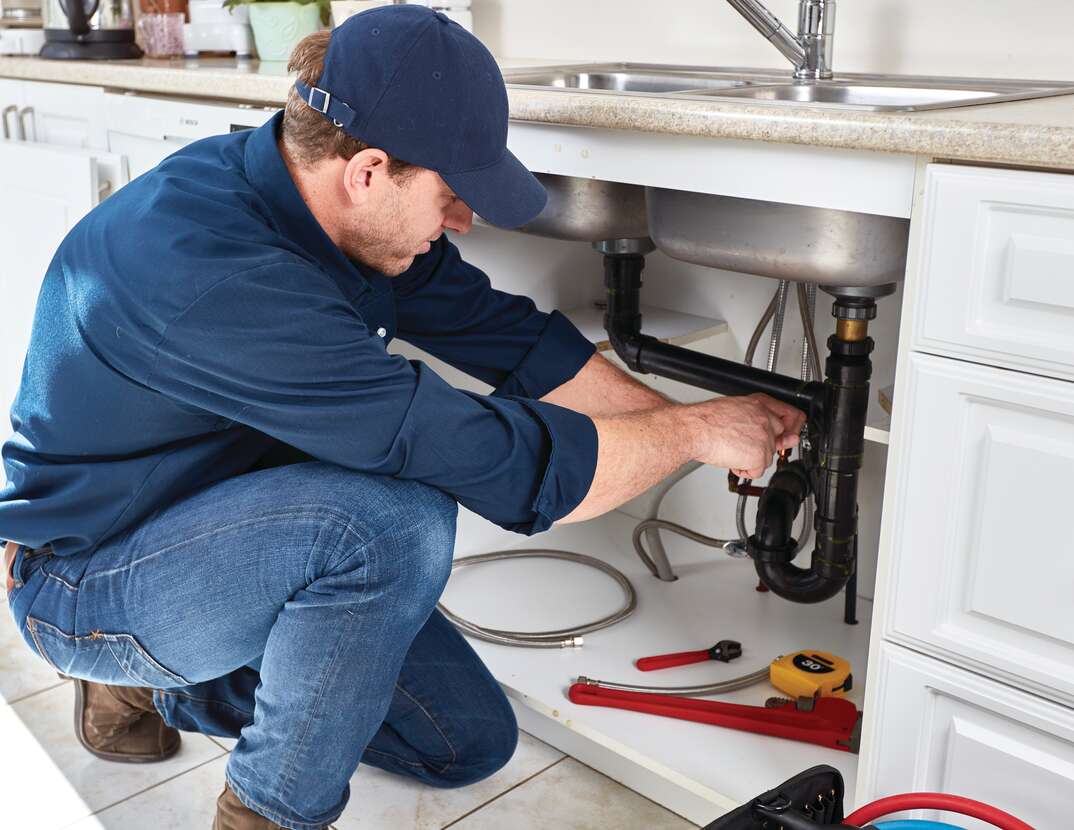Everything 'Bout the Kitchen Sink: A 5-Step Installation Guide

Sink Installation Steps at a Glance
- Tools and Materials: Adjustable pipe wrench, socket wrench, small putty knife, utility knife, hardware included with new sink, plumber’s putty, silicone caulk, towels, small bucket
- Step 1: Disconnect under-the-sink plumbing
- Step 2: Remove existing sink
- Step 3: Install new sink
- Step 4: Reattach components
- Step 5: Look for Leaks
When homeowners start dreaming of kitchen upgrades, visions of marble countertops and counter-depth fridges likely come to mind — just about everything but the kitchen sink. Yes, the simple sink is an oft-overlooked update that’s actually one of the biggest game changers for your daily kitchen routine.
This May Also Interest You: How to Install or Replace Your Kitchen Faucet: A Step-by-Step Guide
Read on to learn how to install or replace a kitchen sink.
What’s Needed to Install a Kitchen Sink?
To install a kitchen sink, you’ll need an adjustable pipe wrench and socket wrench, a small putty knife and a utility knife. In addition to all of the hardware included with your new sink, you’ll want to make sure you grab some plumber’s putty and silicone caulk. Because you’ll likely have to clean some spilled water from the water lines, make sure you have plenty of towels or a small bucket on hand, as well.
Is Replacing a Kitchen Sink Easy?
Although it might appear intimidating, installing a kitchen sink is a pretty straightforward process, even if you’ve never dealt with any plumbing before. The ease of sink installation depends on several factors, including the size and weight of the sink. Keep in mind that cast-iron enamel sinks, in particular, can be extremely heavy. Even if you plan on tackling the project solo, you may need a partner to help you lift the sink into place.
Do You Need a Plumber to Install a Kitchen Sink?
Installing a sink is a surprisingly doable do-it-yourself project. That said, it can quickly go from doable to daunting — especially if the sink you’re installing has different dimensions or drain locations than your previous sink. If that’s the case, you’ll need to make some adjustments to the under-sink plumbing locations, as well as the opening in your countertops. Depending on your countertop material, you could risk causing some permanent damage. For situations like this, you should probably call a professional.
To avoid this, make sure that you measure your existing sink. If the new one has different dimensions or drain locations, chances are you’ll have to make these adjustments to the counter or plumbing.
 -------------------------------------------
-------------------------------------------
Step-by-Step Sink Installation
Follow the steps below to guide you in the installation of your new sink.
Step 1: Disconnect the Under-the-Sink Plumbing
Before you start detaching your under-sink plumbing, make sure you turn off the water supply to the sink. By and large, most supply lines have shutoff valves on them, but that isn’t always the case. If you don’t see any shutoff valves under your sink, you may end up having to turn off the water supply to the entire house. After you’ve done that, turn on your faucet to drain the main line and release any pressure that’s still trapped inside the line.
Pro Tip: While you’re under the sink, take a picture of your under-sink plumbing so you can use it as a reference when you need to reattach your pipe and valve configuration later.
Once you’ve turned off the water supply, you’ll need to disconnect the supply and drain lines. Make sure your bucket is nearby to catch the water that might come out of the lines. You’ll need to also make sure your dishwasher drain line is removed. Again, have a bucket handy to catch the water that’ll spill out of the drain.
Step 2: Remove the Existing Sink
When your supply lines are disconnected, use your utility knife to cut around the caulk that’s around the existing sink. Then, with the socket wrench, loosen the metal clips under the counter that holds the sink in place. Once you’ve done this, you should be able to push the sink from underneath and loosen it from the countertop. Lift the old sink and dispose of it responsibly.
Step 3: Install the New Sink
Before you insert your new sink into the opening, double check the measurements by placing your sink over the hole. Again, if the measurements are off, you’ll more than likely need to do some adjusting. Call a professional if your sink is too large — or, in some cases, too small — for the opening. A pro will be able to easily handle any necessary adjustments to ensure your sink fits properly.
Once the sink has been placed into the countertop hole, attach the clips underneath the sink’s perimeter. After attaching the clips, roll some plumber’s putty into a thin strip and apply it underneath the edges of your strainer, which sits flush with the surface side of the sink around the drain. Place the strainer into the sink with the putty side first.
Finally, apply rubber gaskets around the sink's drain from below. It might help to lay the sink on its side for this part of the project.
After the gaskets and strainers are added, it’s time to place your sink into its new home. Make sure you lower it carefully into the countertop hole. Then, rotate the clips so that the sink is secured firmly in place. Add a bead of silicone caulk around the perimeter of the outside of the sink, wiping away any seepage with a wet paper towel.
More Related Articles:
- How Much Are Granite Countertops?
- Kitchen Cabinet Refacing: Pros and Cons
- How to Paint Kitchen Cabinets
- How to Install Kitchen Backsplash in 7 Simple Steps
- How Much Does It Cost to Remodel a Kitchen?

Step 4: Reattach the Components
Once the sink is in place, it’s time to reattach your under-sink plumbing configuration. Glance at the picture you took at the beginning of the project and use it as a reference for where each line connects. Also, remember that your hot-water supply line is generally on the left side and the cold water supply is on the right. As always, call a plumber if you need some help with this portion of the project, as any mistakes can cause leaks that will inevitably lead to problems down the line.
Step 5: Look for Leaks
After you’ve reattached the sink’s plumbing configuration, turn on the water supply and inspect for leaks. Keep in mind that, just because you notice a small leak upon turning the water back on, it doesn’t necessarily mean you’ve made a major mistake; simply turn the water off and tighten the lines at the site of the leak.
After reconnecting plumbing lines, your sink should be ready for use. It may not seem like the most glamorous of kitchen projects, but upgrading a sink can increase functionality and elevate your space. Heck, it may even make dishwashing feel like less of a chore.
While sink replacements can be handled by most DIYers, there will likely come a time when your plumbing system will need more serious repairs. That's why it pays to be prepared with a plan from HomeServe. See how these plans can help you be prepared for the costs associated with covered plumbing repairs.


